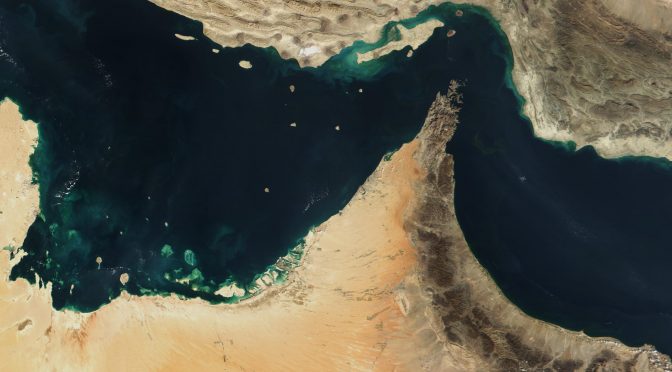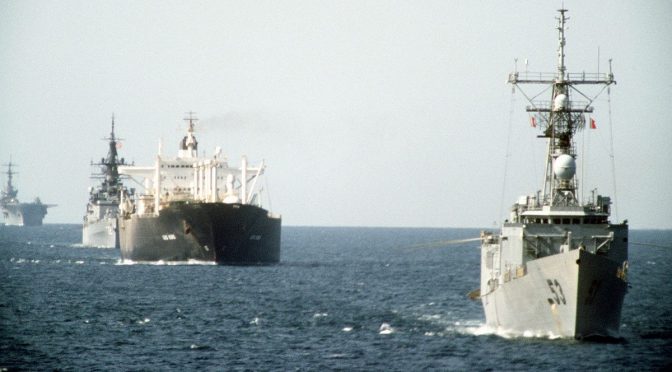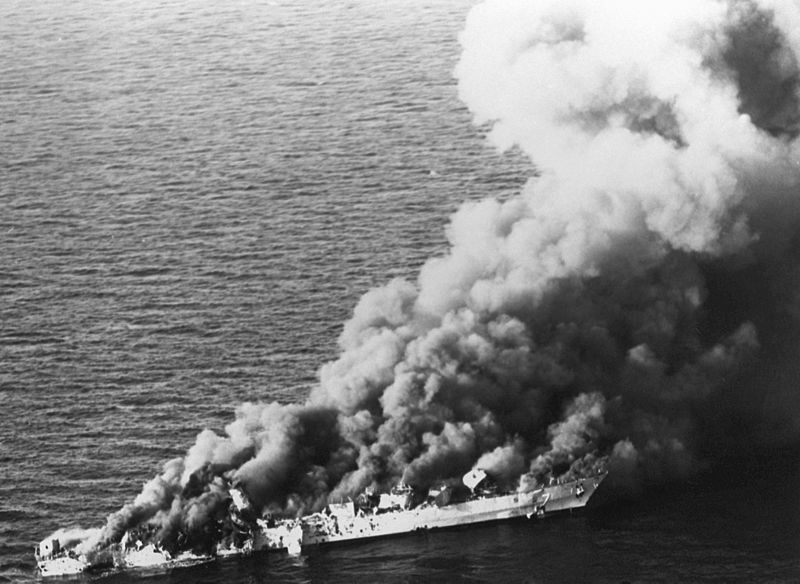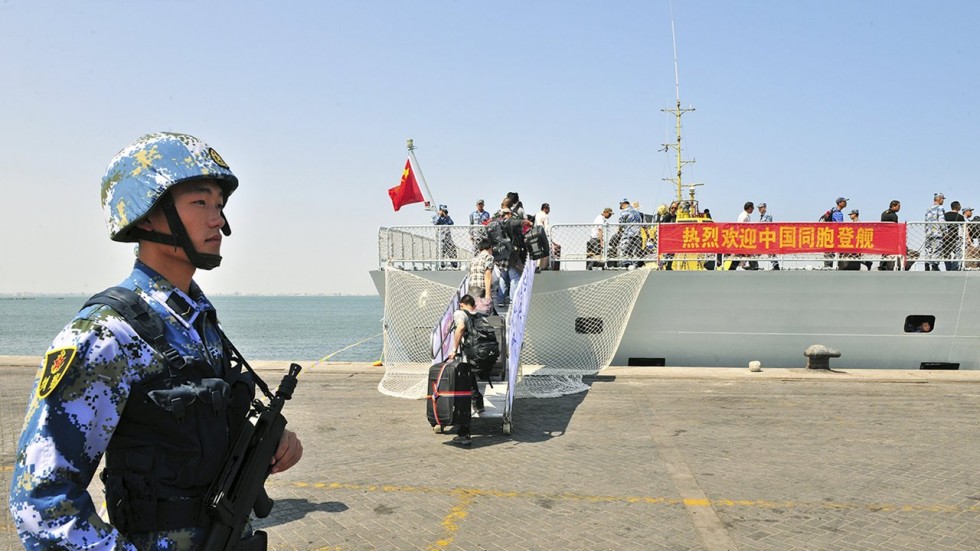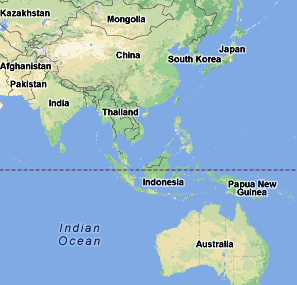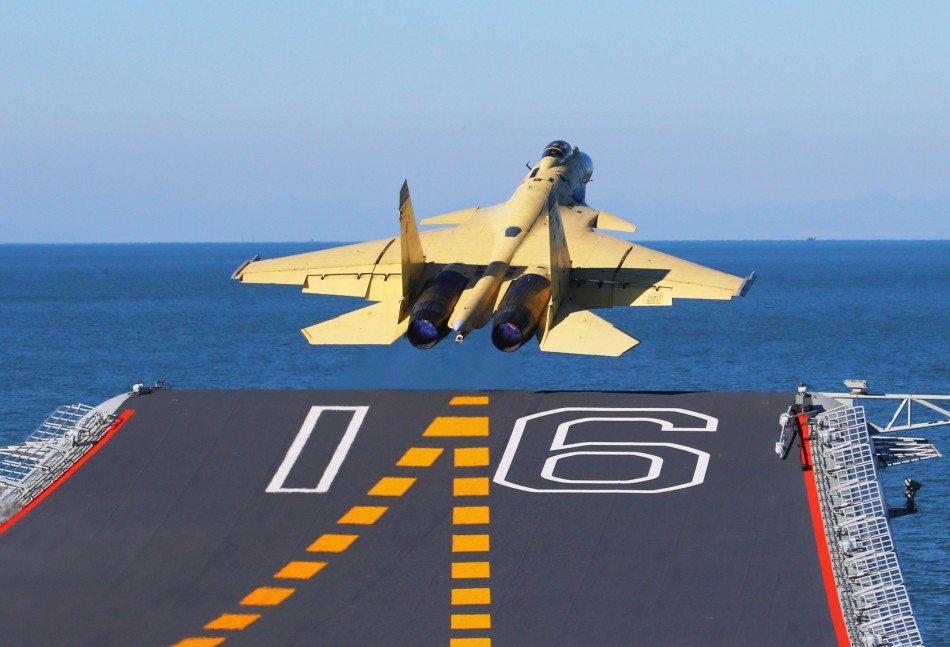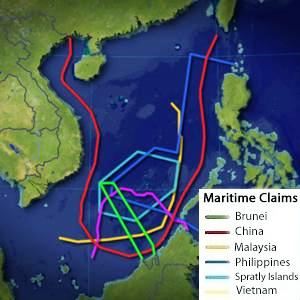By Imran Shamsunahar
The first part of this two-part series on the Strait of Hormuz analyzed the strategic importance of the Strait for global energy shipping and political stability in the Arabian Gulf, and provided an overview of Iran’s overall strategy of using its asymmetric doctrine to disrupt commercial shipping within the vital waterways to both deter enemies and fight a protracted war if necessary. This second part will focus on Iran’s actual maritime capabilities and discusses whether their threats to close down oil shipment in the Strait of Hormuz are credible or not.
Asymmetric Weapons and Tactics
Although Tehran has frequently made clear their intentions to close the Strait of Hormuz in times of war or heightened tensions, do they actually have the military capability to do so? Both the Islamic Republic of Iran Navy (IRIN) and the Revolutionary Guards’ Navy (IRGCN) have invested in a multitude of asymmetrical weaponry which would be used to harass and disrupt shipping coming through the Strait.
One potent tool in the Iranian naval inventory is its extensive range of ASCMs, a capability the Iranians have sought to invest in since the Iran-Iraq War, either through direct purchase or by depending heavily on Chinese designs for indigenous production. During the Tanker War, the Iranians would employ coastal-defense variants of the Chinese HY-1 and HY-2 ASCMs (also known as the CSSC-2 Silkworm and CSSC-3 Seersuckers) in a series of missile sites ringing the Strait of Hormuz, Qeshm Island, and nearby Kishk, thereby forcing any ship entering the Strait to sail through their missile envelope (it is believed Iran’s coastal missile defenses are still arranged in this manner). Fears of escalation meant the missiles were never used within the Strait of Hormuz (although two missiles were fired at Kuwait on October 15 and 16, 1987, each hitting a tanker). Iran’s inventory of shore-based missiles are maintained by both navies.1,2, 25
Starting in the 1990s, the Iranians imported the C-801 and C802 missiles. The land-based variants had an advantage over the HY-1/HY-2s insofar that they could be mounted on vehicles and guided by mobile radar stations, instead of being pegged to fixed launch sites. This means the missiles can be used in a ‘shoot and scoot’ fashion, making it harder for the enemy to locate and destroy their batteries after having released their payloads. As well, the Iranians armed most of their fast small boats, referred to as Fast Attack Crafts (FACs), with the C-802, including the Thondor-class or Kaman-class boats, as well as all their frigates and corvettes. The Iranians also developed the Qadir missile, based on the C-802A missile. It has a longer range than the C-802 and is less vulnerable to radar countermeasures.3
Iran also possess three short-range missile systems, again influenced by Chinese designs. This includes the Kosar missiles, based on the Chinese C-701, while the Nasr 1 and Nasr 2 correspond to the C-704. All three systems can be deployed on both land vehicles for coastal defense, as well as FACs including the IRGCN’s North Korean based Peykaap-II class craft and Chinese-made Cat-class catamaran missile boats.4
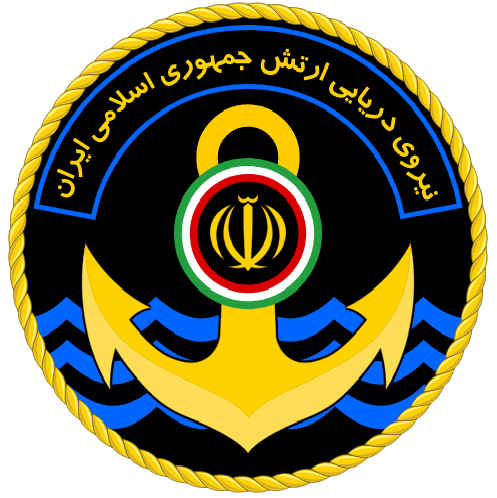
The use of small fast boats plays a big part in Iran’s apparent ‘swarming tactics,’ in which they hope to counteract the enemy’s superior surface vessels through overwhelming numbers attacking from different directions. Unlike other navies, which seek to gradually acquire larger vessels as traditional navies would, the IRGCN has consciously sought to acquire smaller and faster boats based on their doctrine of asymmetric warfare. Alongside the FACs, the IRGCN also possess far more numerous Fast Inshore Attack Crafts (FIACs), which are smaller in tonnage and more lightly armed (usually with machine guns and rockets).
Since they are travelling in dispersed rather than large formations, they become harder to detect. Owing to their size, they could operate from any available jetty, with Iran’s numerous oil platforms and islands within the Strait providing forward operating platforms for these small fast boats (as well as forward observation posts to detect enemy shipping).5 Indeed, it is feared the Iran would exploit the broken littoral character of the Strait to wage a sort of maritime guerrilla war, exploiting its numerous small islands to hide small boats in ambush to await larger naval vessels and tankers to sail through. These small boats would utilize a variety of weapons to either damage or sink enemy shipping, including rockets, RPGs, heavy machine guns, torpedoes, and shoulder-launched surface-to-air missiles. However, it is believed the main weapon of choice would be guided anti-ship missiles. Coupled with shore-based mobile ASCMs, Iran could turn the Strait into perilous waters for any shipping to traverse.6,7
Mining the Strait
Most analysts agree that the most effective means by which the Iranians could hope to disrupt traffic through the Strait would be through mining. Mines represent a defensive, cost-effective, low-technology weapon in which to hinder and manipulate enemy movement. It should be noted that during the Tanker War in 1988, an Iranian mine costing $1,500 dollars was able to inflict $96 million worth of damage to the frigate USS Samuel Roberts in the Arabian Sea (mines have accounted for over 77 percent of total U.S. ship casualties since the end of the Second World War). They are relatively easy to produce and maintain, useful for a developing country like Iran. Mines would grant the Iranians the ability to channel hostile shipping through specific channels, where they would then be more vulnerable to other attacks such as small fast boats and shore-based anti-ship missiles, as well as delay enemy war plans as they are forced to instead focus attention and resources on mine clearing operations. Even then, the simple threat of the presence of mines would grant the Iranians a great psychological advantage, as shipping companies become more hesitant to risk their shipping being mined as it transits the Strait (potentially causing global energy prices to skyrocket), as well as affecting the morale of personnel aboard U.S. and allied warships.8,9
Iran is one of two dozen countries in the world which manufactures mines domestically, although its more advanced mines come from Russia, China, and North Korea (even its domestically-produced mines are based on Chinese designs). The total inventory of Iranian mines is believed to range from two to five thousand. Iran now boasts a variety of mines in its inventory. These mines can differ based on their positioning in the water, from drifting mines which float on the surface, moored mines which float at a pre-programmable depth beneath the surface, and bottom mines, which are placed on the seabed (particularly useful in the shallow waters of the Strait). They also differ on how they are triggered, from simple contact mines to more sophisticated influence mines, which can be triggered by detecting a change in the acoustic environment, water pressure, or magnetic field. Iran also claims to possess nonmagnetic mines, which are more difficult to detect by enemy mine-sweeping. Analysts differ on how many mines the Iranians would need to successful blockade the Strait, with numbers ranging from just three hundred to having to gamble their entire stockpile.10,11
Iran could feasibly utilize almost any platform within its naval inventory in a mine laying role. Its most potent platform would be its submarine fleet, with its three Kilo-class submarines, able to lay 24 mines per sortie. Its midget submarines, the Ghadir and Nahang class, could also be utilized in a mine-laying role (the Ghadir is believed to be able to lay between 8-16 mines per sortie). The Iranians could also use non-conventional mine-laying platforms, including its array of small boats, open-decked boats (such as naval amphibious and logistic vessels) and civilian shipping (such as fishing dhows). Since small boats can lay between 2-6 mines per sortie, they would probably be used in a mass mining effort by the Iranians. Their small size would make them difficult to detect and intercept, and in some cases the enemy would be unable to distinguish civilian shipping involved in innocent commercial activity and those involved in mine laying work.12,13
Closing the Strait: A Realist Assessment
But exactly how much of a threat would Iran’s swarming tactics and anti-ship missiles pose? It should be noted that in 2002, a joint wargame exercise conducted by the U.S. military called Millennium Challenge 2002 depicted an invasion of a fictional Middle Eastern country. Said fictional country fought using tactics and strategies closely resembling that of Iran, utilizing shore-based missiles and swarm tactics with fast boats. By the end of the game, the U.S. had lost 16 ships and the lives of thousands of servicemen.14 However, other commentators remain skeptical. J. Peter Pham, writing for The Journal of the National Committee on American Foreign Policy, noted that the sheer size of modern tankers makes it difficult for small boats to make contact with the ship, with ‘the flow of surface water along the hull of such a large, moving ship creates strong currents toward the ships stern.’ As well, the piece noted that since crude oil does not ignite easily, the tanker would most probably absorb any explosion if contact was made, meaning modern tankers can take a lot of punishment before sinking. An estimated ‘eight to ten’ missiles would be needed to actually sink a tanker, which would exhaust Iran’s finite stockpiles (save perhaps in specific cases where the missile would penetrate the hull and subsequently explode, causing secondary explosions).15 The U.S. Fifth Fleet could also respond with the traditional strategy when it comes to protecting one’s merchant shipping from harm, that of providing convoy duties. This is a strategy the U.S. adopted during the Tanker War. The U.S. Navy would escort 252 ships between July 1987 and December 1988, with only one commercial ship damaged by an enemy mine.16 An article in Strategic Comments noted:
“The value of a convoy system would not just be in the missile defence offered by the layered missile-defence systems on board the U.S. Navy’s Ticonderoga-class cruisers and Arleigh Burke-class destroyers currently deployed with the Fifth Fleet. Standard SM-2 and Evolved Sea Sparrow air-defence missiles along with the Phalanx gun-based close-in-weapon system would provide the main tools to counter the air and missile threats.”17
Besides the extensive defenses offered by U.S. warships, air dominance over the Strait would offer another added protection against nimble small boats threatening merchant shipping. American helicopters and fighters proved particularly useful in destroying IRGCN vessels during the Tanker War, and the apparent weakness of the Iranian air assets and air defenses today would arguably allow U.S. and Gulf air assets to achieve a similar goal. It should be noted that in February of this year, the U.S. Air Force’s venerable A-10 Warthogs took part in mock attacks on small boats as part of routine exercises, possibly demonstrating how air attacks against Iran’s fast small boats would play out in a real conflict.18
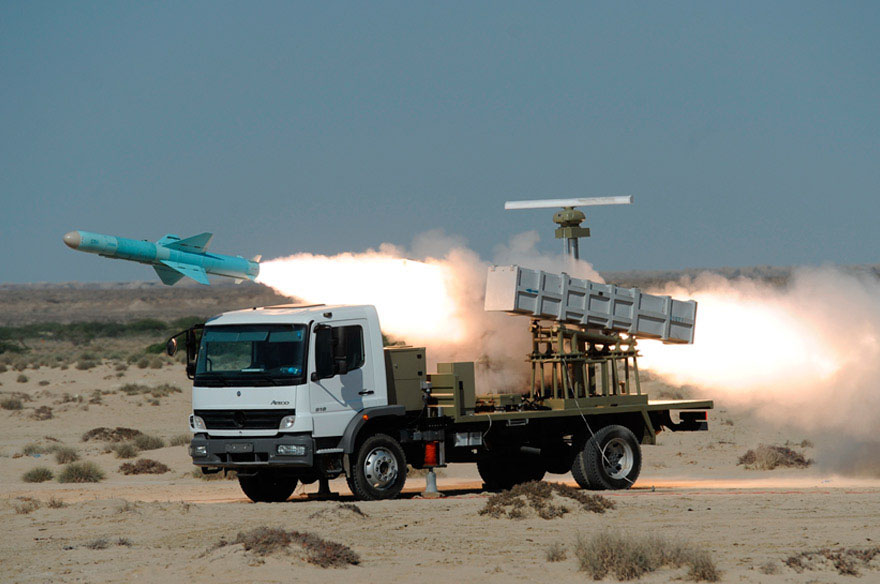
Mining also has its limitations. Like anti-ship missiles, some doubt that mines would be powerful enough to outright sink a ship the size of a modern tanker. As well, the U.S. Fifth Fleet has stationed in Bahrain four Avenger-class mine countermeasure vessels, and could theoretically call upon the help of the British, French, Saudi and Emirati navies, all of whom possess anti-mine vessels.19 It should be noted however, that minesweeping and clearance work is still a time-consuming endeavor. Gulf military analyst Sabahat Khan noted that clearing mines can take ‘two hundred times as long’ as it took to lay them. Creating safe passageways could take weeks, while clearing the Strait entirely would cost months. As well, more sophisticated mines would require more time consuming strategies such as unmanned underwater vehicles (UUVs) and human divers.20
Mines are not a discriminating weapon, and could potentially damage Iranian vessels as well as the vessels of neutral states. This could cause political complications with friendly nations such as China, with whom the Iranians depend heavily on for both arms sales and investment in the Iranian energy sector. The biggest loser from any attempt to completely close off shipping through the Strait would be Iran itself. An article from 2010 noted that Iran exported 2.4 million barrels of petroleum a day through the Strait of Hormuz (providing two-thirds of its total budget), and is also heavily dependent on the Strait for its gasoline imports, being the largest gasoline consumer in the region. As such, most scholars argue that the Iranians would only seek to close the Strait if they felt the survival of the regime itself was at stake, either in an outright war, in retaliation for a particularly crippling sanction imposed, or a foreign attempt to neutralize critical national capabilities (e.g. its nuclear facilities).21, 22
Ultimately, a successful closing of the Straits through mining is dependent on the Iranian mine laying effort not being detected and intercepted by its enemies early on, thereby hindering further mine laying efforts by the enemy’s overwhelming force. The first few hours would thus be critical, with the Iranians seeking to lay as many mines as possible. For the U.S. and its Gulf allies, preventing a mining of the Strait would thus depend heavily on effective intelligence, surveillance, and reconnaissance (ISR) capabilities, to ensure adequate maritime domain awareness to intercept Iranian intentions early on.23,24
Conclusion
Ultimately, it remains unlikely that Iran could actually close down the Strait to maritime shipping, with esteemed scholar Anthony Cordesman noting that Iran couldn’t close the Strait for ‘more than a few days to two weeks.’ Instead of a naval blockade, the most the Iranians could hope for would be a strategy of guerre de course on individual shipping, causing only minor inconveniences for global energy markets. Scholars suggests that Iran’s often highly embellished rhetoric about closing down the Strait to shipping has more to do with burnishing nationalist credentials to a domestic audience, as well as introducing volatility to the energy market to help raise energy prices and pump the regime’s coffers.25
However, this shouldn’t mean that those concerned with the protection of freedom of navigation in the Strait can rest easily. Constant vigilance should be kept, and vital capabilities such as ISR, anti-submarine warfare, minesweeping, and air dominance should be both maintained and improved upon. As Clausewitz reminds us, war is composed of passion and chance. What could start as sporadic attacks against individual tankers could rapidly escalate beyond everyone’s imaginations. U.S. and allied forces in the region should ensure adequate strategic and operation responses to Iran’s threats which are both militarily effective and carefully calibrated to the situation.
Imran Shamsunahar is a recent graduate of the University of Hull, where he earned a Master’s in Strategy and International Security. He holds a Bachelor of Arts in History from the University of Toronto. He developed an interest in maritime security and naval warfare during his graduate studies, and wrote his dissertation on the South China Sea dispute and contemporary maritime strategy. He is currently based in his home city of Kuala Lumpur where he is interning for Horizon Intelligence, a Brussels-based security risk monitoring company catering to travelers. In the meantime, he enjoys writing articles on naval matters as a hobby. He is hoping to continue his studies in the near future, hopefully once again in maritime security.
References
1. ‘Strait of Hormuz: Iran’s Disruptive Military Options’, Strategic Comments, 18, no. 1 (2012), p. 2
2. David B. Crist, David B. Crist, ‘Gulf of Conflict: A History of U.S. – Iranian Conflict at Sea’, The Washington Institute for Near East Policy, June 2009. Available online: http://www.washingtoninstitute.org/uploads/Documents/pubs/PolicyFocus95.pdf, p. 10
3. ‘Strait of Hormuz: Iran’s Disruptive Military Options’, p. 2
4. Ibid
5. David B. Crist, ‘Gulf of Conflict’, p. 22 – 23
6. Dave Majumbar, ‘Could Iran Sink a U.S. Navy Aircraft Carrier?’, The National Interest, December 30th, 2015, http://nationalinterest.org/blog/the-buzz/could-iran-sink-us-navy-aircraft-carrier-14767
7. Robert Czulda, ‘The Defensive Dimensions of Iran’s Military Doctrine: How Would They Fight?’ Middle East Policy, 23 , no. 1 (2016): p. 92-109. Available online: http://onlinelibrary.wiley.com/doi/10.1111/mepo.12176/full
8. David B. Crist, ‘Gulf of Conflict’, p. 24 – 25
9. Sabahat Khan, Sabahat Khan, ‘Iranian Mining of the Strait of Hormuz – Plausibility and Key Considerations’, Institute for Near East and Gulf Military Analysis, January 2010. Available online: http://www.inegma.com/Admin/Content/File-29122013113155.pdf, p. 2
10. J. Peter Pham, ‘Iran’s Threat to the Strait of Hormuz’, p. 68
11. Ibid, p. 3
12. Joseph Travithick, ‘A-10 Warthogs Practice Blasting Swarms of Small Boats’, The Drive, March 2nd 2017, http://www.thedrive.com/the-war-zone/8052/a-10-warthogs-practice-blasting-swarms-of-smallboats?xid=twittershare
14. Brett Davis, “Learning Curve: Iranian Asymmetrical Warfare and Millennium Challenge 2002”, CIMSEC, August 14th, 2014, https://cimsec.org/learning-curve-iranian-asymmetrical-warfare-millennium-challenge-2002-2/11640
15. P. Peter Pham, ‘Iran’s Threat to the Strait of Hormuz: A Realist Assessment’ The Journal of the National Committee on American Foreign Policy’, 32, no. 2 (2010): p. 66 – 69
16. ‘Strait of Hormuz: Iran’s Disruptive Options’, p. 3
17. Sabahat Khan, ‘Iranian Mining of the Strait of Hormuz’, p. 3
18. Ibid
13. David B. Christ, ‘Gulf of Conflict’, p. 23
19. ‘Strait of Hormuz: Iran’s Disruptive Options’, Strategic Comments, 18, no. 1 (2012).
20. Sabahat Khan, ‘Iranian Mining of the Strait of Hormuz’, p. 7
21. Ibid
22. J. Peter Pham, ‘Iran’s Threat to the Strait of Hormuz’, p. 69 – 71
23. Sabahat Khan, ‘Iranian Mining of the Strait of Hormuz’, p. 9
24. J. Peter Pham, ‘Iran’s Threat to the Strait of Hormuz’, p. 70
25. Ibid, p. 71 – 72
Featured Image: The Persian Gulf (Jacques Descloitres, MODIS Land Rapid Response Team, NASA/GSFC)

